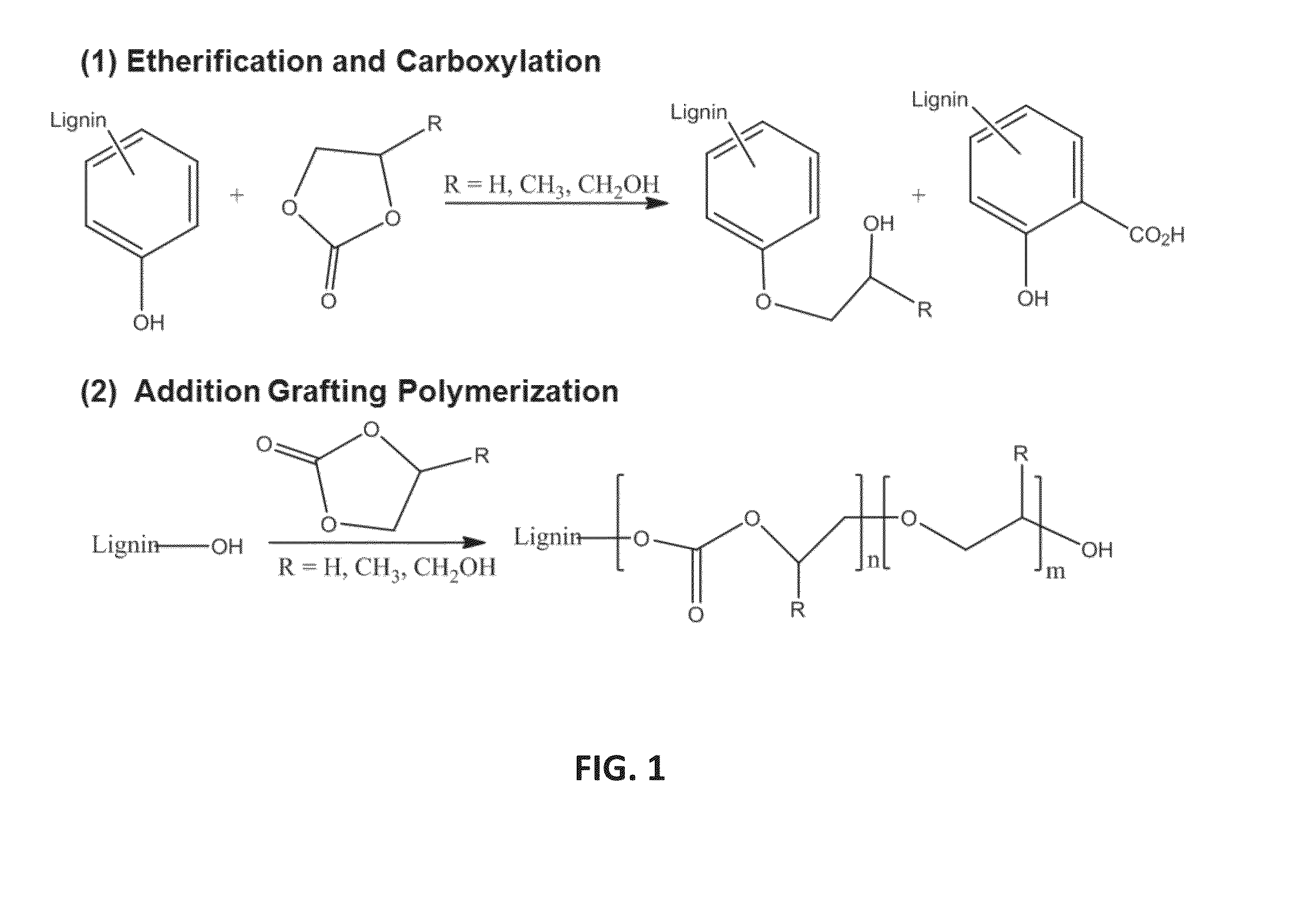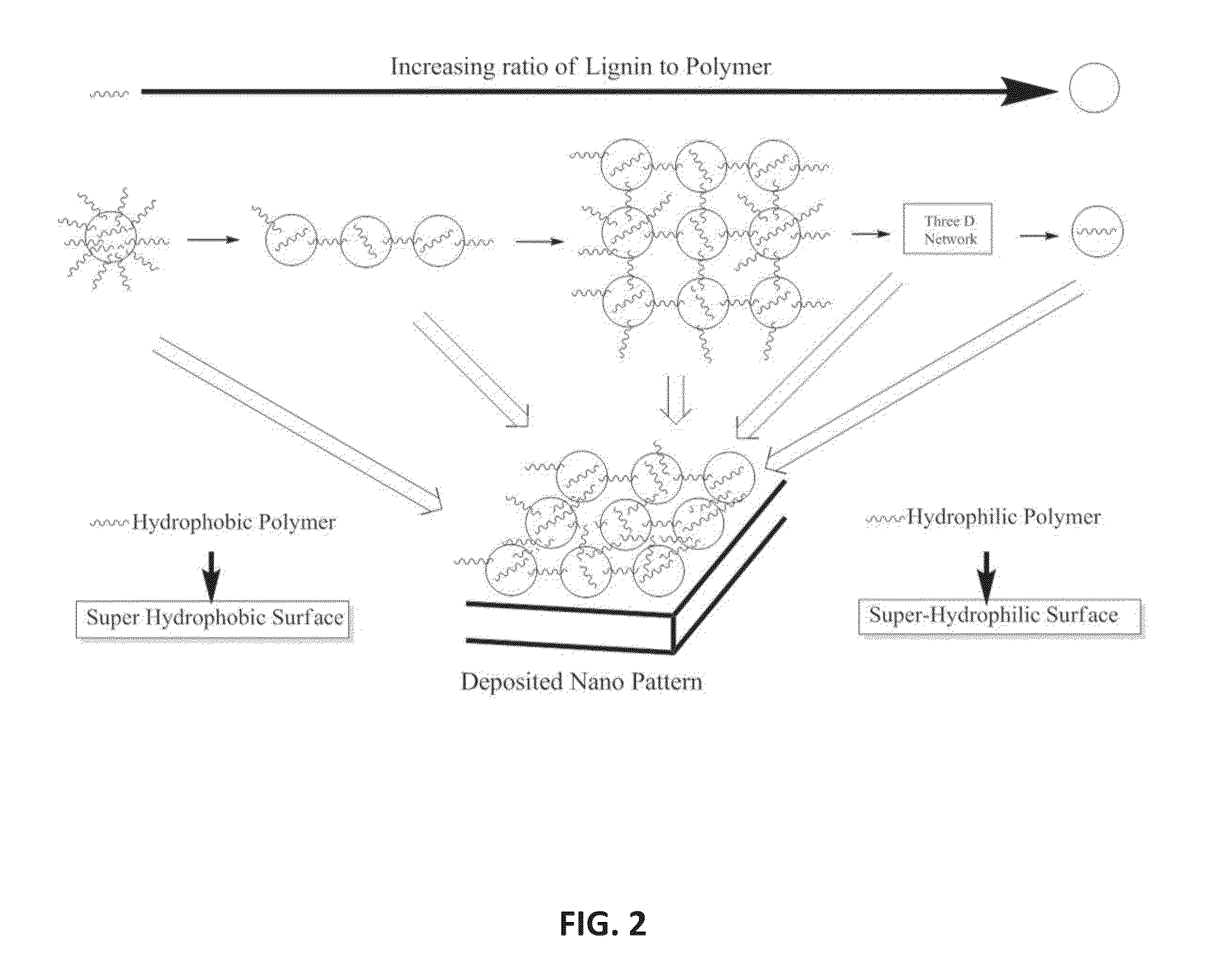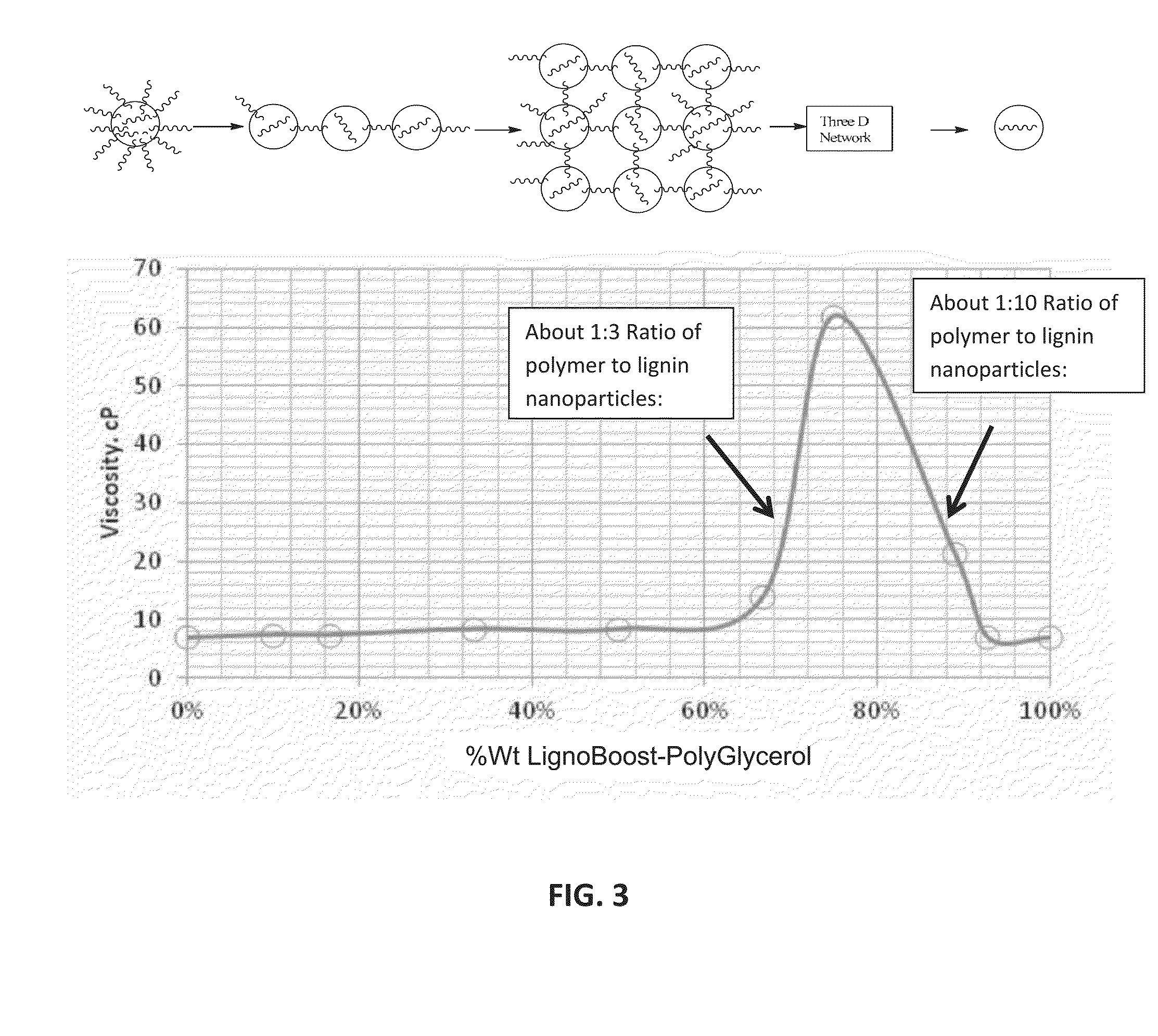Lignin nanoparticle dispersions and methods for producing and using the same
a technology of lignin nanoparticles and dispersions, which is applied in the direction of lignin derivatives, organic chemistry, coatings, etc., can solve the problems of ineffective extraction of lignin in wood pulp liquor, high cost, and high cost of processing
- Summary
- Abstract
- Description
- Claims
- Application Information
AI Technical Summary
Benefits of technology
Problems solved by technology
Method used
Image
Examples
examples
[0094]BioChoice™ (West, Montreal, QC) lignin isolated from black liquor and obtained from Domtar Paper Co. (West, Montreal, QC), which operates a LignoBoost® process originally developed by Innventia AB, Stockholm Sweden, was used in the following examples unless otherwise specified below or in the tables.
Overview of Analytic Equipment Used in Examples
[0095]Particle size characterizations were made using a ZetaPlus instrument from Brookhaven Instruments Corporation (Holtsvill, NY) measuring samples comprising 0.01 wt % of solids in water at the following settings: Ref. Index Fluid=1.1330; Angle=90; Wavelength=658 nm; Run Duration=5 minutes (final data an average of five repeats); Ref. Index Real=1.600; and Dust Filter Setting=30.00.
[0096]Centrifuge separations of nanoparticle solutions were performed using an Eppendorf® Centrifuge 5430 from Eppendorf North America (Hauppauge, NY) equipped with a FA-45-48-11 rotor at a fixed angle at 9000 rpm (RCF=8060×g), while using the inner row (...
PUM
| Property | Measurement | Unit |
|---|---|---|
| Temperature | aaaaa | aaaaa |
| Temperature | aaaaa | aaaaa |
| Temperature | aaaaa | aaaaa |
Abstract
Description
Claims
Application Information
 Login to View More
Login to View More - R&D
- Intellectual Property
- Life Sciences
- Materials
- Tech Scout
- Unparalleled Data Quality
- Higher Quality Content
- 60% Fewer Hallucinations
Browse by: Latest US Patents, China's latest patents, Technical Efficacy Thesaurus, Application Domain, Technology Topic, Popular Technical Reports.
© 2025 PatSnap. All rights reserved.Legal|Privacy policy|Modern Slavery Act Transparency Statement|Sitemap|About US| Contact US: help@patsnap.com



